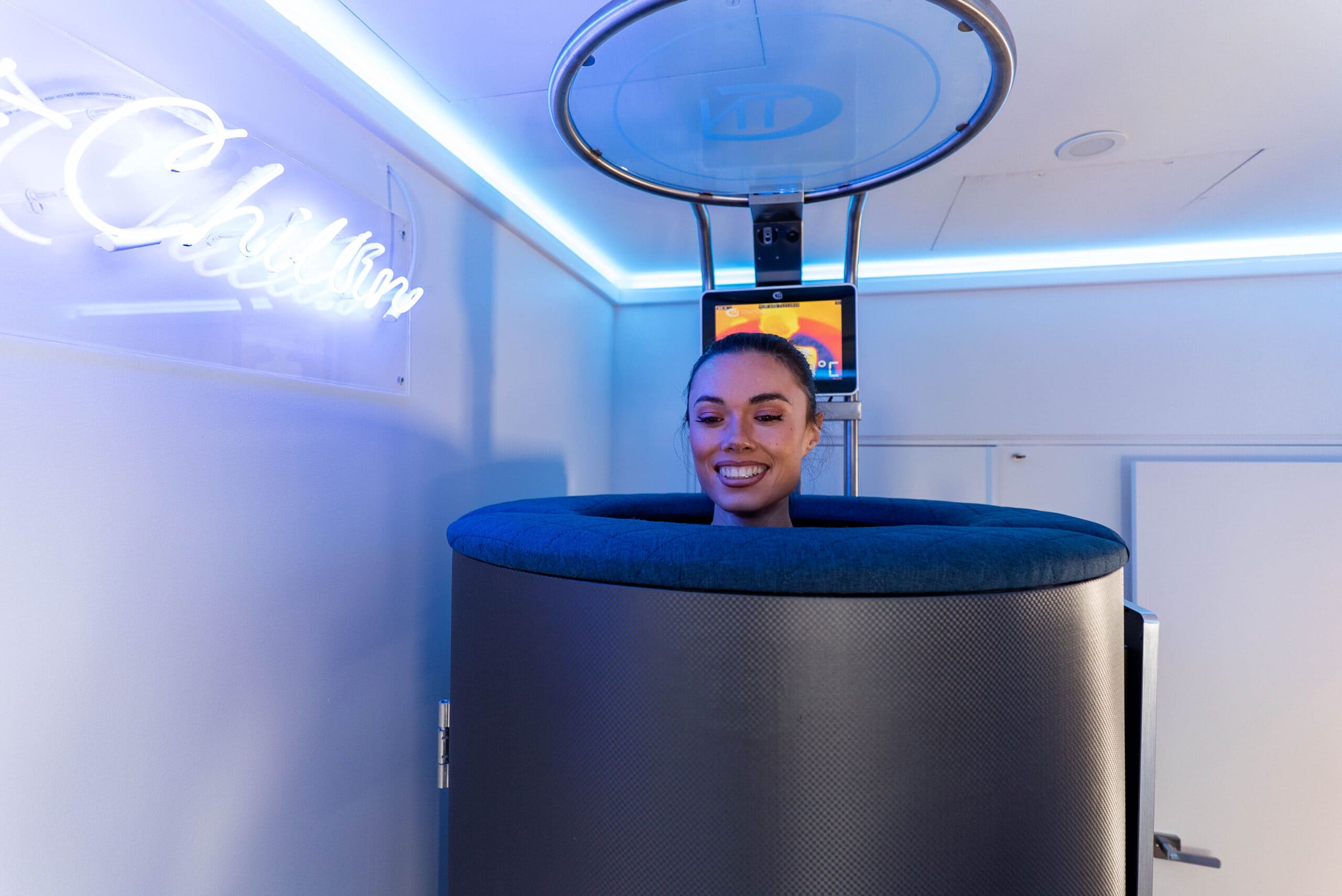You’ve probably heard of steam saunas before and might have even tried them a few times. Infrared saunas, on the other hand, aren’t as common and are lesser known by the general population, even if you are someone who uses the steam room regularly.
While they are quite similar in essence, knowing the differences between the two will help you make an informed decision as to which one you prefer and which will better suit your personal needs and wants.
If you found a traditional sauna (or steam room) too intense and uncomfortable, or if you had any other complaints, then you might find yourself satisfied going down the path of infrared saunas.
We’ll break down the two types of saunas for you, and then discuss the key differences that could influence your decision.
What Are Steam Rooms?
A sauna steam room is an airtight room made of non-porous materials like glass or tiles. A steam generator is installed to boil water and create a moisture-rich environment. The steam rooms are heated up to 70°-100° Celsius and the body is heated up by the high heat and humidity (i.e. “wet heat”).
Depending on the sauna, the humidity can vary. A traditional steam sauna from Finland will typically use dry heat with a somewhat high humidity of 10-20%. On the other hand, a traditional sauna from Turkey will have a much higher level of humidity. Some steam rooms can even reach 100% humidity, and the higher the humidity, the hotter the room feels.
Steam rooms can raise the body’s skin temperature up to 40° Celsius. Heavy and intense sweating occurs in response to the rising skin temperature. Your heart rate will start rising as the body tries to keep itself cool.
Steam rooms operate by heating the outside environment, so you get warmed from the outside in.

What Are Infrared Saunas?
Infrared saunas consist of a wooden cabin equipped with infrared heaters that usually operate between 45°-55° Celsius to initiate an oil sweat, although they can get as high as 70° Celsius.
Infrared refers to the wavelength of light energy used that is safe for humans as it is naturally occurring from sources all around us. We feel infrared heat from things like fire and hot sand warmed by the sun on the beach. The sun is the largest and most obvious source of infrared heat and it is this invisible infrared wavelength that is responsible for making us feel warm.
- A full spectrum infrared sauna is made up of three different waves that each have different characteristics and frequency ranges:
- near infrared light (NIR), mid infrared light (MIR), and
- far infrared light (FIR).
Infrared saunas warm the body using infrared rays the same way that the sun does, penetrating deep into the body and heating it directly. The infrared rays effectively warm the body naturally and effectively directly.
How Steam Makes a Difference
A traditional sauna steam room consists of a lot of steam (surprise!) The steam creates a high humidity in the air which drives the temperature even higher. This makes you sweat even more excessively.
Essentially, the main point of infrared and traditional saunas is to sweat, in order to release impurities and waste products to detoxify the body. But, the excessive heat and humidity used to create the sweat isn’t all that pleasant. So, many people can only manage 20 or so minutes at a time in a steam room. Additionally, if you have eye or lung problems, they might be aggravated or elevated by the intense steam.
On the other hand, the positive outcomes of the steam in a regular sauna include opening up the lungs and clearing blocked sinus. The steam also penetrates into the skin and opens up pores and can thus be a beneficial skin detoxification for people with skin concerns.
But infrared waves are able to penetrate much deeper than steam – they permeate up to 4cm through the skin and into your core. This increases the body’s temperature from inside, meaning that a deeper level of detoxification can be reached on a cellular level.
Even though infrared saunas have a lower temperature than traditional saunas, you still produce a large amount of sweat. The key difference is, because the temperature of an infrared sauna is lower and more tolerable than a steam room, people find it easier to remain inside for longer. And the longer your sauna sessions, the more beneficial they will be.
What Are the Health Benefits of Saunas?
Both infrared saunas and steam rooms have therapeutic and relaxation health benefits such as reducing stress and sweating for detoxification.
Unlike a traditional steam sauna that heats the atmosphere around you, an infrared sauna uses advanced infrared technology to warm your body directly. As this infrared heat is absorbed by the body, its thermal energy increases. This results in numerous health benefits that cannot be experienced from steam saunas.
- Infrared saunas can assist with relieving muscle and joint pain and stiffness. The infrared heat can penetrate the body up to 40mm, right into the inflamed problem areas. The heightened blood circulation brings oxygenated blood to the muscles quicker and removes metabolic waste faster, helping them to recover.
- Consistent use of infrared saunas can promote weight loss and decrease the appearance of cellulite. Heating the body from the inside out raises metabolic rate and can boost its effectiveness.
- The deep intense heating increases the body’s core temperature which tricks the body and results in an artificial fever. This is how the body can naturally strengthen its immune system.
- Studies show that infrared sauna use can regulate blood pressure and prevent hypertension.
- Infrared sauna cabins are used in Japan and Korea during “Waon therapy” for cardiovascular health conditions and diseases, such as chronic heart failure and peripheral arterial disease.

Key Takeaways
If you prefer a quick and intense sweat, then steam saunas could be your preferred choice. If you don’t mind the heat and don’t have any adverse responses to the humidity, you can experience its health benefits like opening up the lungs and sinuses, relaxation and skin purification due to sweating.
Infrared sauna therapy penetrates the body more than just skin-deep, so it affects the body on a deeper level too. The detoxification occurs on a cellular level, and improved blood circulation means waste products can be removed quicker and be replaced with fresh, oxygen-rich blood.
As a result, infrared saunas can offer more health benefits than steam rooms, such as relieving muscle and joint pain and stiffness, increasing the metabolism, strengthening the immune system, regulating blood pressure and for cardiovascular benefits.
There is no wrong answer, and there’s also nothing wrong with doing a combination of the two to enjoy the health benefits of both.
Feel free to contact us or pop in to Feel Good Nation to have a tour of our state of the art infrared saunas and have a chat with our friendly staff. We’ll be able to answer any questions you might have and set up an appointment.
DISCLAIMER
The information on this website is for informational purposes only. No material is intended to be a substitute for professional medical advice, diagnosis or treatment. Always seek the advice of your doctor with any questions you have regarding a medical condition or treatment before undertaking a new health regimen. Never disregard professional medical advice or delay in seeking it because of something you have read on this website





